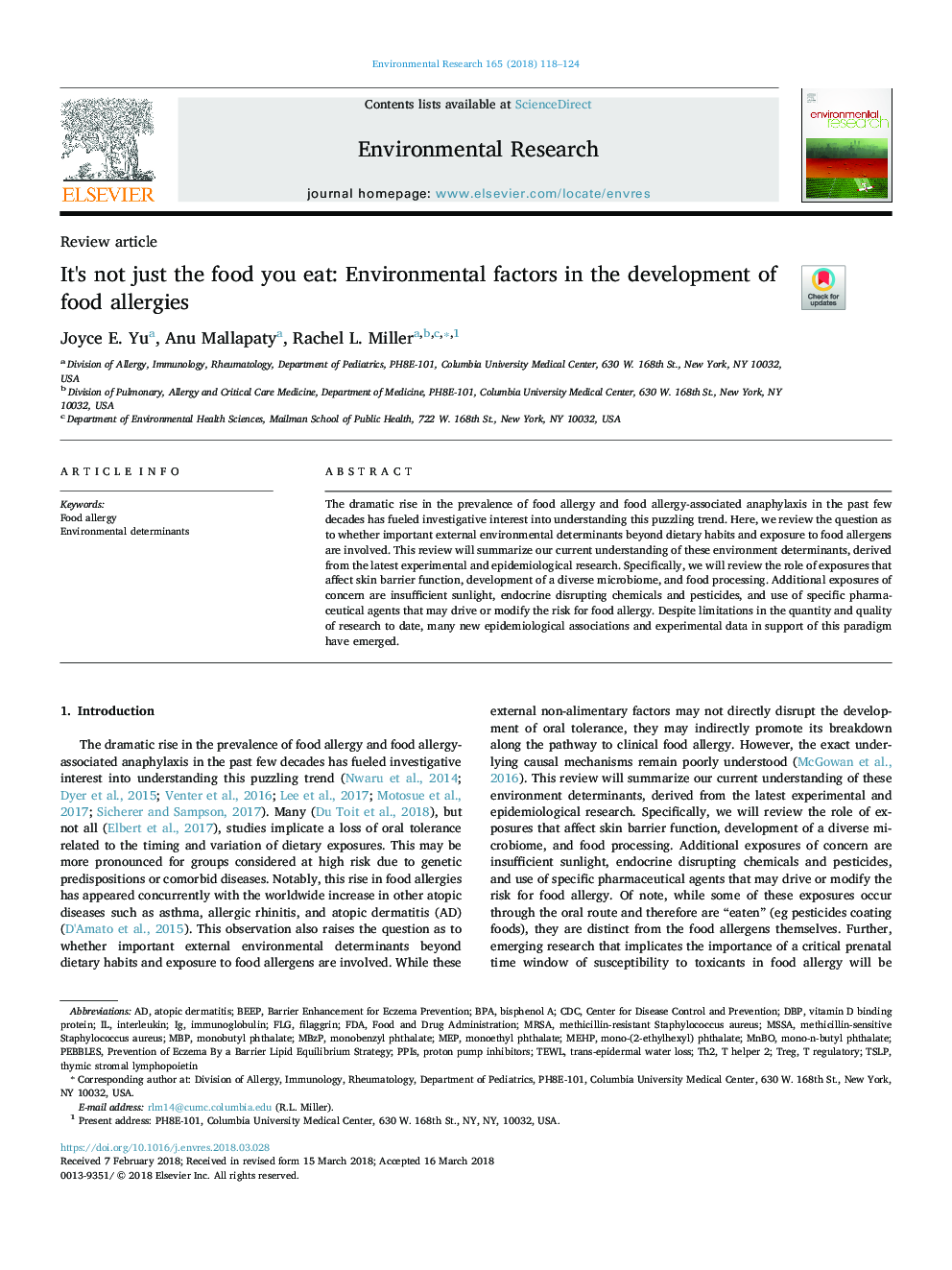| Article ID | Journal | Published Year | Pages | File Type |
|---|---|---|---|---|
| 8868975 | Environmental Research | 2018 | 7 Pages |
Abstract
The dramatic rise in the prevalence of food allergy and food allergy-associated anaphylaxis in the past few decades has fueled investigative interest into understanding this puzzling trend. Here, we review the question as to whether important external environmental determinants beyond dietary habits and exposure to food allergens are involved. This review will summarize our current understanding of these environment determinants, derived from the latest experimental and epidemiological research. Specifically, we will review the role of exposures that affect skin barrier function, development of a diverse microbiome, and food processing. Additional exposures of concern are insufficient sunlight, endocrine disrupting chemicals and pesticides, and use of specific pharmaceutical agents that may drive or modify the risk for food allergy. Despite limitations in the quantity and quality of research to date, many new epidemiological associations and experimental data in support of this paradigm have emerged.
Keywords
MBzPMEHPFLGT helper 2Th2TSLPTEWLPPIsTregmono-n-butyl phthalateMSSABPAFDADBPMBPMEPCDCBeepmono-(2-ethylhexyl) phthalateT regulatoryFood allergyTrans-Epidermal Water Lossmethicillin-sensitive Staphylococcus aureusMRSAmethicillin-resistant Staphylococcus aureusimmunoglobulin interleukinBisphenol AAtopic dermatitisFood and Drug AdministrationPebblesEnvironmental determinantsfilaggrinThymic stromal lymphopoietinCenter for Disease Control and PreventionProton pump inhibitorsmonoethyl phthalatemonobenzyl phthalatemonobutyl phthalateVitamin D binding protein
Related Topics
Life Sciences
Environmental Science
Health, Toxicology and Mutagenesis
Authors
Joyce E. Yu, Anu Mallapaty, Rachel L. Miller,
